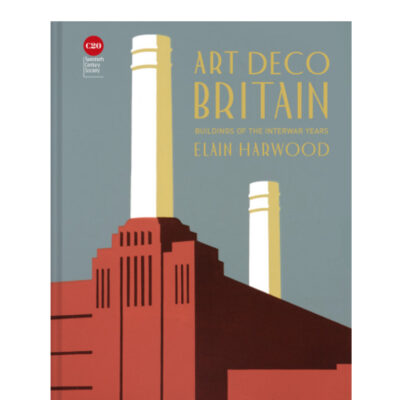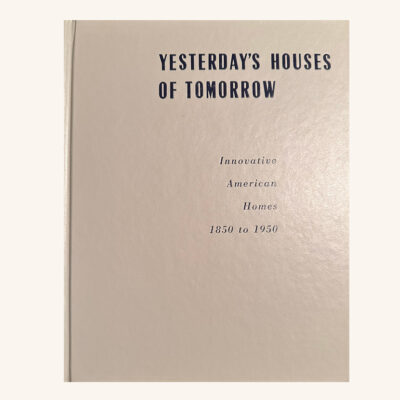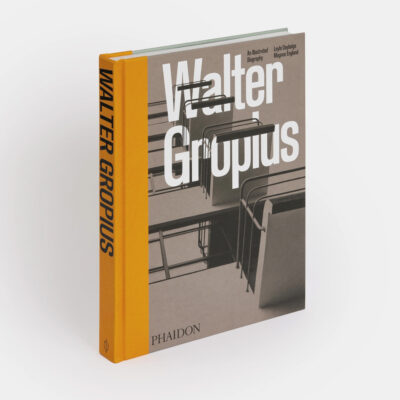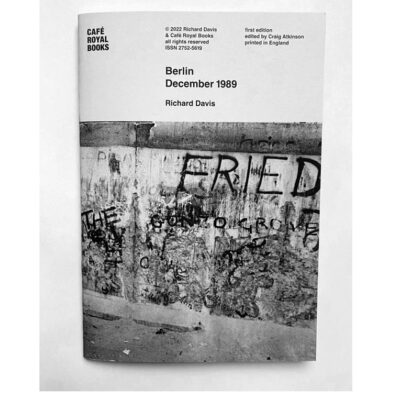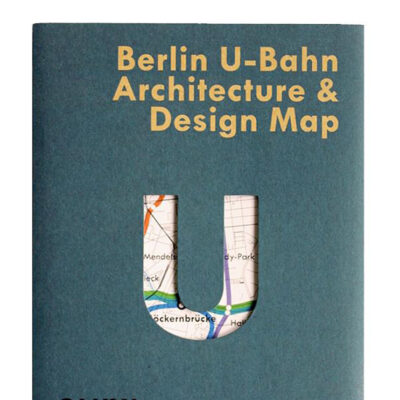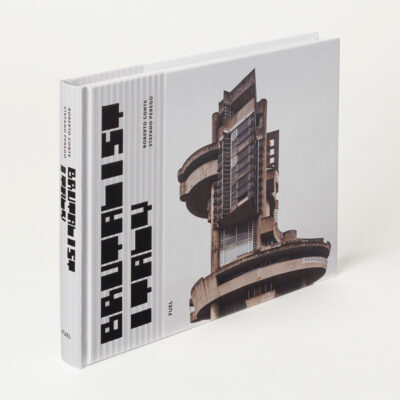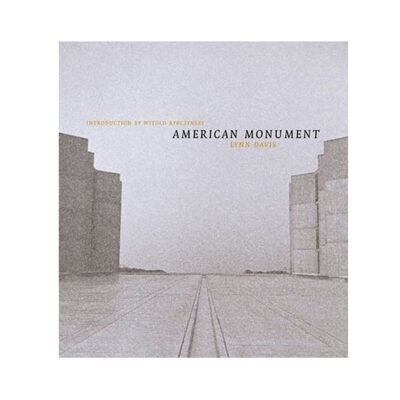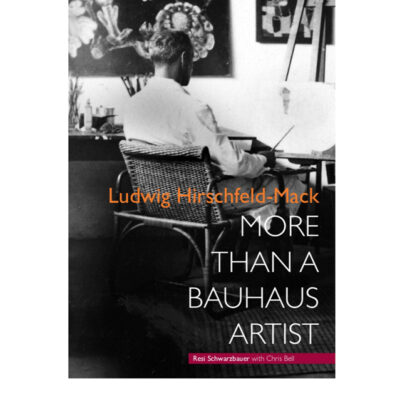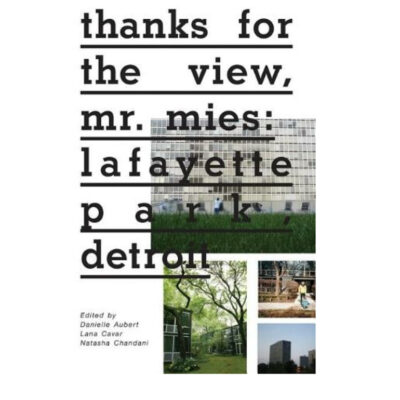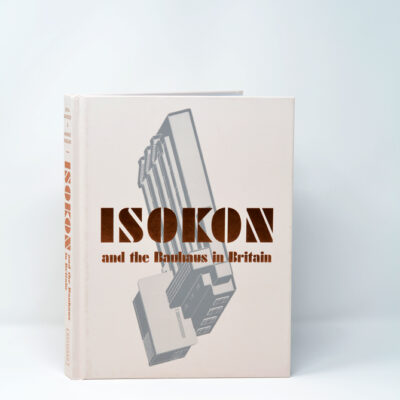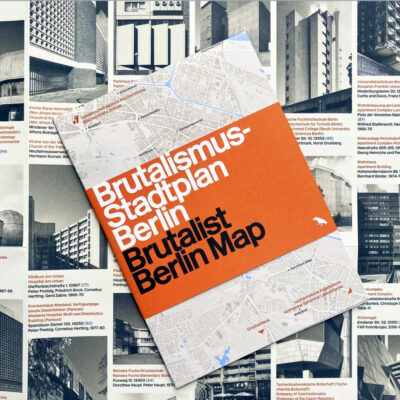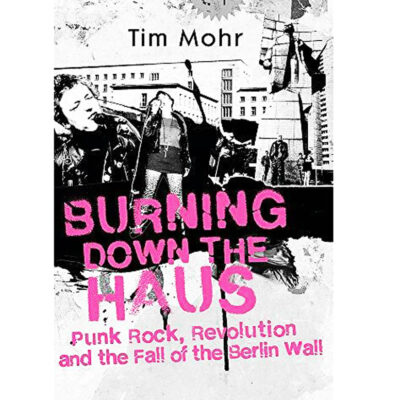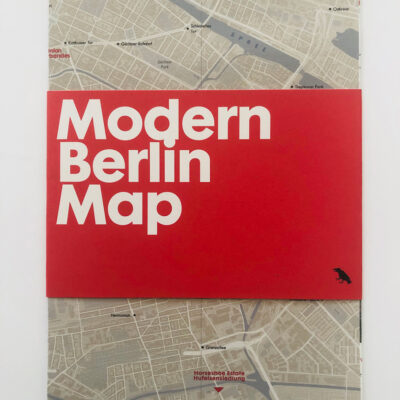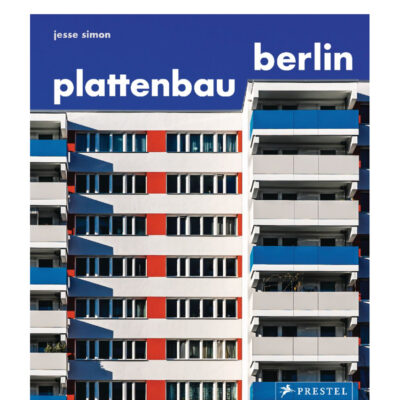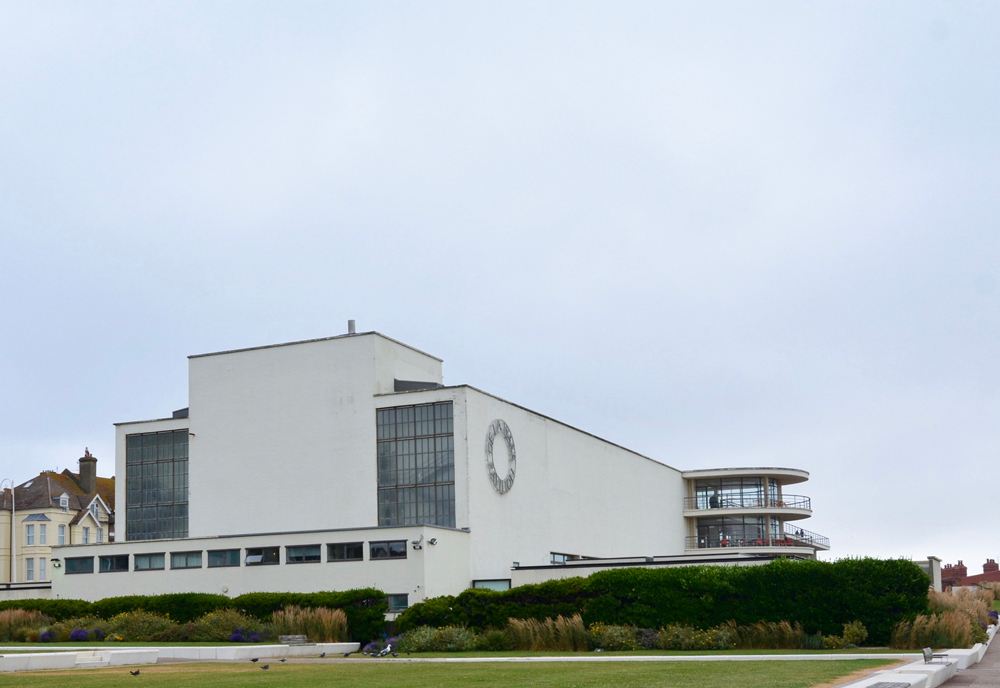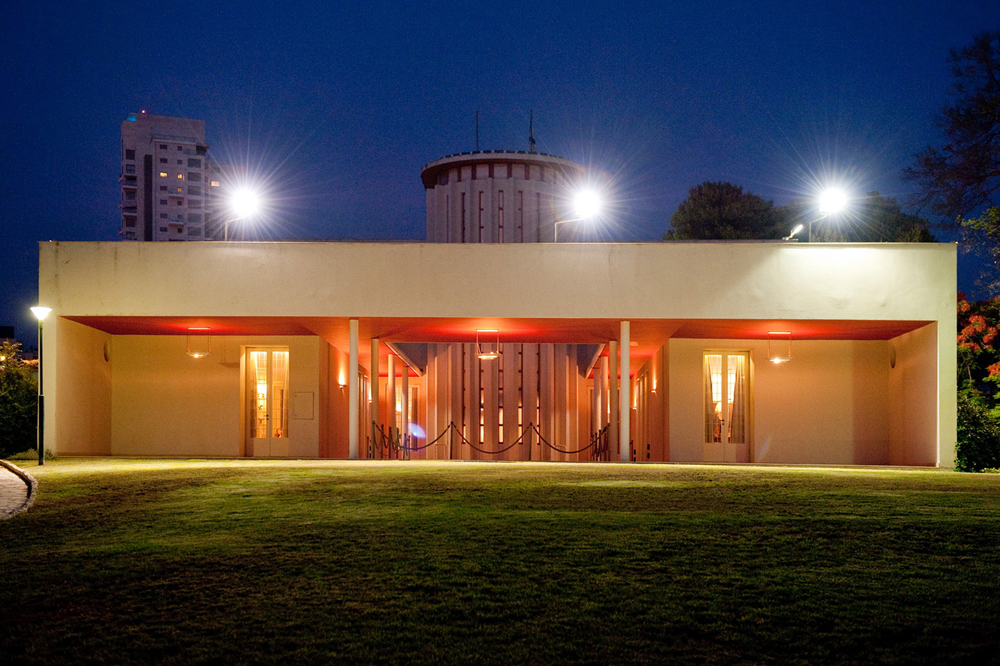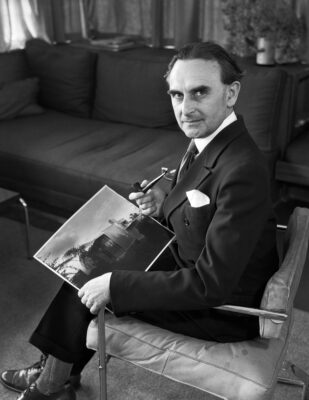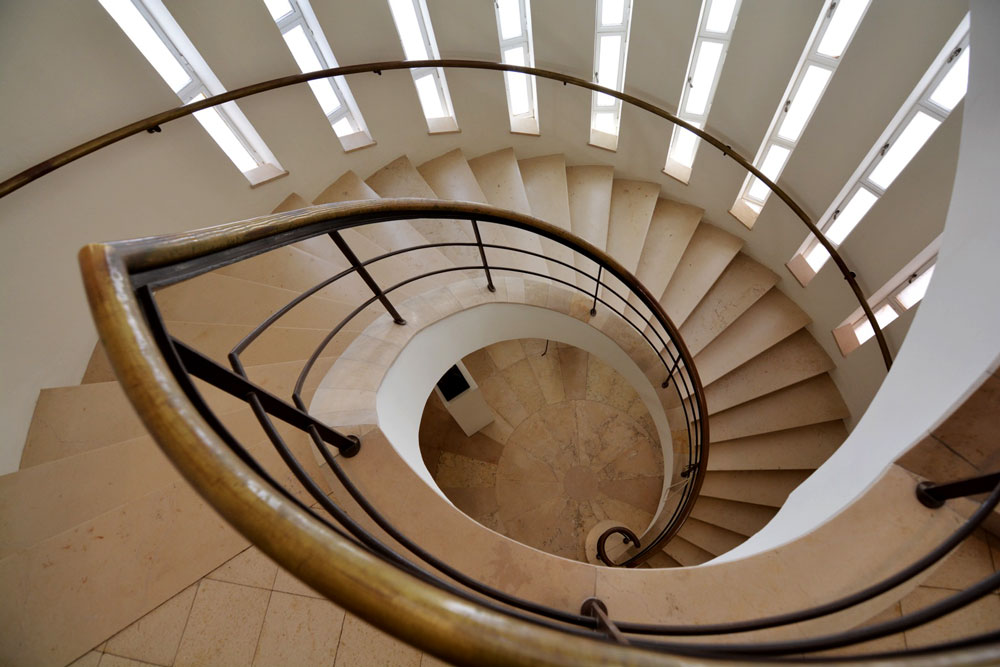
Erich Mendelsohn
Erich Mendelsohn was born in Allenstein, East Prussia, into a modestly comfortable Jewish family. He studied at the Technical University of Berlin and Munich, gaining a degree in architecture in Munich in 1911. His teacher, Theodor Fischer, co-founder and first chairman of the Deutscher Werkbund, brought the young Mendelsohn into the orbit of avant-garde, experimental activist circles such as Die Brücke and Der Blaue Reiter. Klee, Kandinsky, and Franz Marc were amongst the group. A gifted artist, Mendelsohn found his first employment as a set designer and painter.
His first commission was the Bet Tahara and the Gardener’s House for the man who tended the adjacent historic Jewish cemetery, a place for the Chevra Kadisha to carry out Jewish burial rituals. In its centenary year, restoration began driven by the determination of the Borussia club and supported by the Robert Bosch Foundation, officially reopened in October 2013. Today, it is called Mendelsohn House, no longer consecrated. It is a place for contemplation and cultural activities and a powerful memorial to a community that no longer exists.
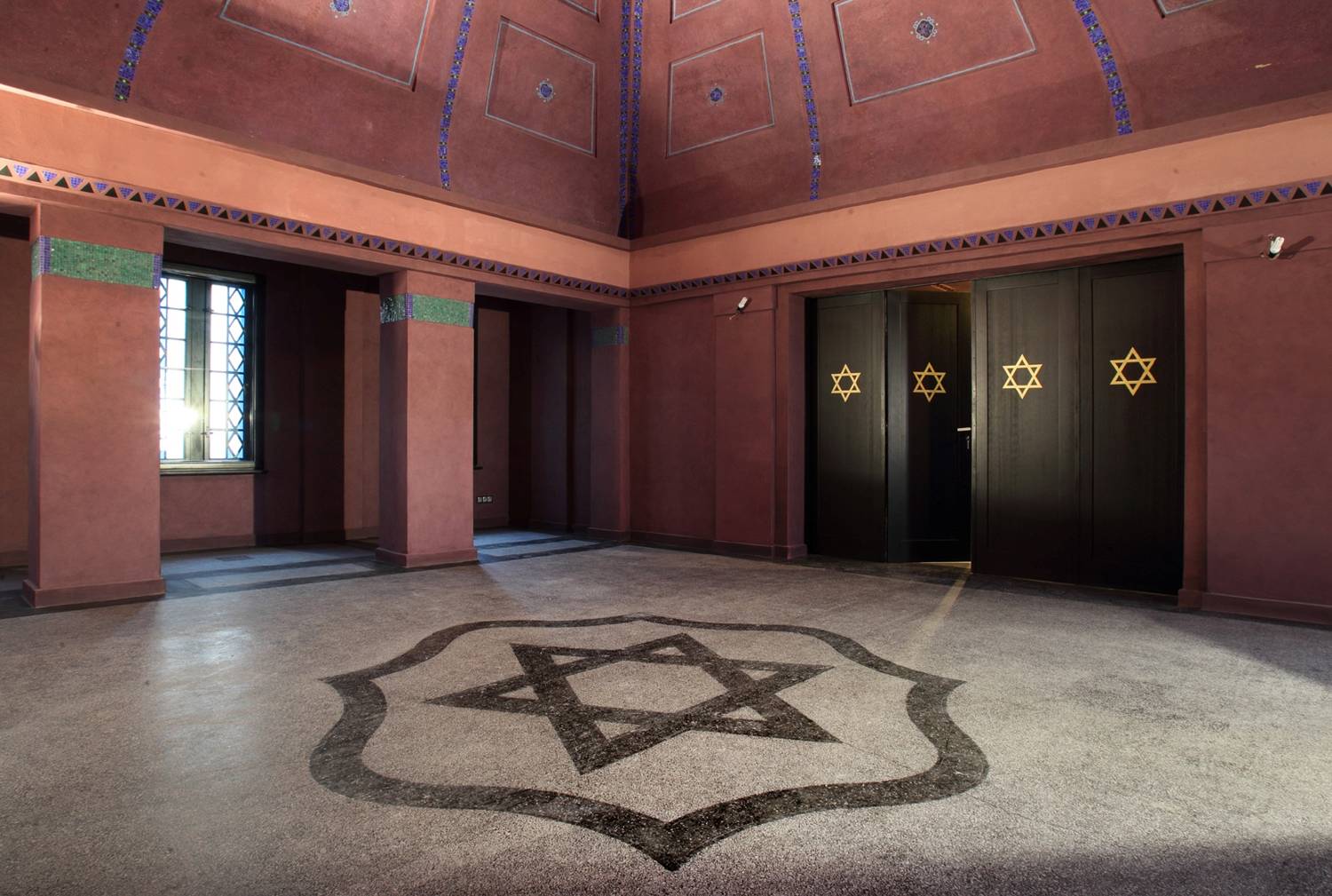
Interior view of the hall of Bet Tahara in Olsztyn after the restoration, 2012. CC BY SA 3.0
He remained in Munich until war broke out, serving as an engineer on the Western and Russian fronts during the First World War. Returning home, Mendelsohn set up an architecture practice which didn’t just blossom; it became a powerhouse, the world’s busiest modernist practice. By now he was moving in illustrious circles, clients included publisher and German retail magnet Salman. Z. Schocken, for whom he had designed department stores with beautiful features such as sweeping staircases, a signature familiar to fans of De La Warr Pavillion and the interior of the Weizmann House. A friendship was formed with Albert Einstein, whose mathematical equations were interpreted by the architect in his 1921 Einsteinturm (Einstein’s Tower) in Potsdam (a young Richard Neutra was a member of Mendelssohn’s team working on this project).
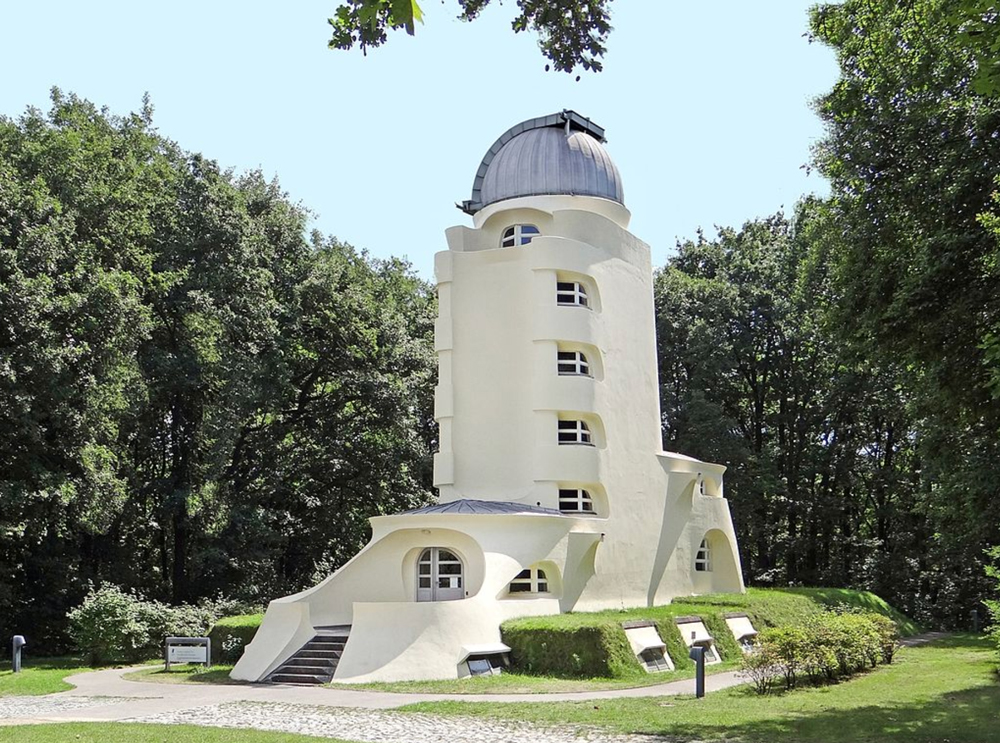
Einstein Tower Potsdam photo Jean Pierre Dalbéra CC BY SA 2.0
Known for his creativity, bold design, and love of curves and lines, his work embodies the spirit of the Weimar Republic. At this time, he was building both in Germany and Russia. Moving in artistic and architectural circles, in 1924, he founded Der Ring with Mies Van Der Rohe and Walter Gropius.
In 1929 he built a house for his family in Charlottenburg around the corner from Hans Luckhardt, Wassili Luckhardt and Alfons Anker’s Haus am Rumpenhorn, completed a year later
Plucking one building from so many options, Columbushaus, completed two years later in 1932, was a triumph, a modernist nine-storey office block with a shopping centre on the ground floor, ‘Dedicated to an idealist version of America’, its location determined its post-war demise in the Soviet Zone, it became home to the Handelsorganisation and the Deutsche Volkspolizei, the German People’s Police.
When Hitler came to power in 1933, everything he feared came to pass. On 1 November, a decree by the Reichskulturkammer für bildende Künste banned Jewish architects from practising under their professional title; Mendelsohn found himself struck off the National Register of German Architects. He quickly left Germany, forced to abandon his practice, arriving in England as a refugee. His client, Salman Schocken, left Germany a few months later, in December 1933.
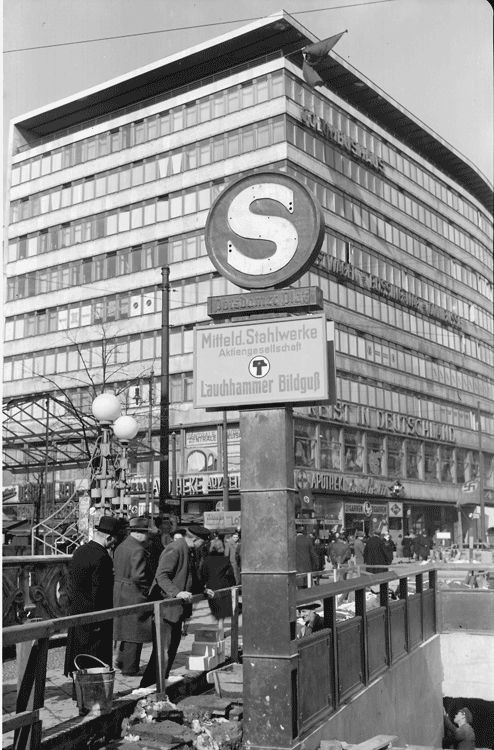
Willy Pragher CC BY 3.0 Entrance to the Potsdamer Platz S-Bahn station in Berlin, in the background the Columbushaus 1939
In a very changed world, Schocken, Mendelsohn, and Chaim Weizmann found their lives intertwined in mid-’30s Britain. Weizmann was often in London (later losing his son who flew with the RAF in WW2), and Salman Schocken, by now, had established himself (never fully settling emotionally) in Jerusalem and was a regular visitor to London.
Mendelsohn didn’t have to start all over again, however, he was reliant on being offered opportunities and Serge Chermayeff did just that, inviting Mendelsohn to join him in his London practice, the pair opened an office on Old Oxford Street, London which operated until 1936. Chermayeff and Mendelsohn needed to beat off stiff competition, competing with the likes of Marcel Breuer to win the competition and design and build the De La Warr Pavillion for Earl De La Warr on the English coast. He became a British Citizen that year.
Meeting in the safety of London triggered a renewal of old contacts. It led to Mendelsohn’s first commission in British Mandate Palestine to build a home for Weizmann and a home for Salman Schocken, together with a library in Jerusalem to house Schocken’s famed collection of early Hebrew manuscripts, his magnificent collection of books by Kafka and priceless books which were rescued and removed intact before the Nazis could plunder and destroy them. It made perfect sense by 1935 for Mendelsohn to open an office in Jerusalem. Other commissions followed, including the Hebrew University and the Weizmann Institute.
He remained an important influencer and developer with an incredible output. With other European-trained architects, he established the International Style in the Middle East, which can be found in his famed Jerusalem, Rehovot, and Haifa buildings.
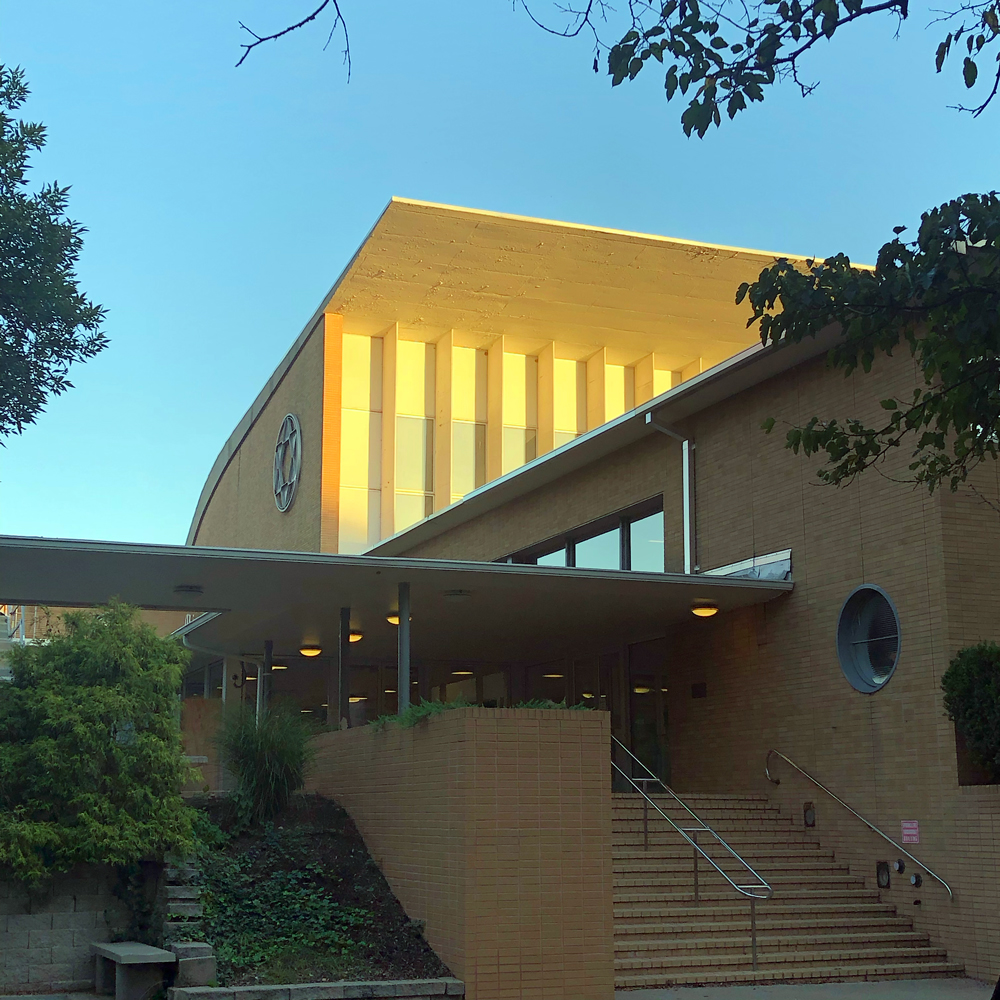
COCA St Louis, originally B’nai Amoona Synagogue. Image Howard Morris
Just before WW2 broke out, Erich moved to California to teach at Berkeley. His first American commission was B’nai Amoona, a Synagogue in St. Louis, Missouri. He also assisted the US Government with his understanding of German housing estates by building a mock village in the Nevada desert for bomber target practice.
Postwar he remained a respected prolific designer until his death in 1953 in San Francisco.
Erich Mendelsohn 1887-1953




